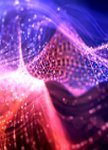版权所有:内蒙古大学图书馆 技术提供:维普资讯• 智图
内蒙古自治区呼和浩特市赛罕区大学西街235号 邮编: 010021

作者机构:Joint Center for Quantum Information and Computer Science NIST/University of Maryland College Park Maryland 20742 USA Martin A. Fisher School of Physics Brandeis University Waltham Massachusetts 02465 USA AWS Center for Quantum Computing Pasadena California 91125 USA IQIM California Institute of Technology Pasadena California 91125 USA
出 版 物:《Physical Review Research》 (Phys. Rev. Res.)
年 卷 期:2025年第7卷第1期
页 面:013040-013040页
核心收录:
基 金:National Science Foundation NSF (OMA-2120757 PHY-1748958 DGE2236417)
主 题:Tensors
摘 要:Low-depth random circuit codes possess many desirable properties for quantum error correction but have so far only been analyzed in the code capacity setting where it is assumed that encoding gates and syndrome measurements are noiseless. In this work, we design a fault-tolerant distillation protocol for preparing encoded states of one-dimensional random circuit codes even when all gates and measurements are subject to noise. This is sufficient for fault-tolerant quantum memory since these encoded states can then be used as ancillas for Steane error correction. We show through numerical simulations that our protocol can correct erasure errors up to an error rate of 2%. In addition, we also extend results in the code capacity setting by developing a maximum likelihood marginal decoder for depolarizing noise similar to work by Darmawan et al. [Phys. Rev. Res. 6, 023055 (2024)]. As in their work, we formulate the decoding problem as a tensor network contraction and show how to contract the network efficiently by exploiting the low-depth structure. Replacing the tensor network with a so-called “tropical tensor network, we also show how to perform minimum weight decoding. With these decoders, we are able to numerically estimate the depolarizing error threshold of finite-rate random circuit codes and show that this threshold closely matches the hashing bound even when the decoding is suboptimal.